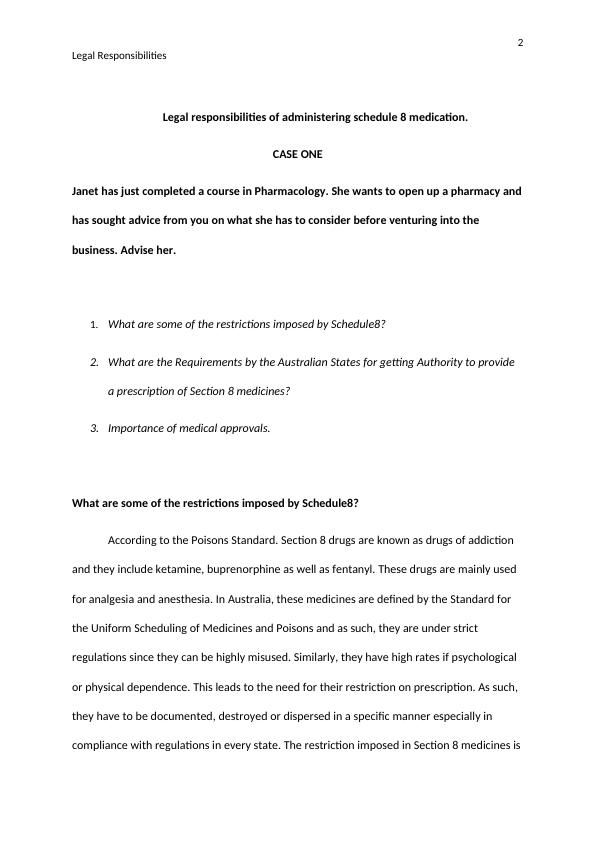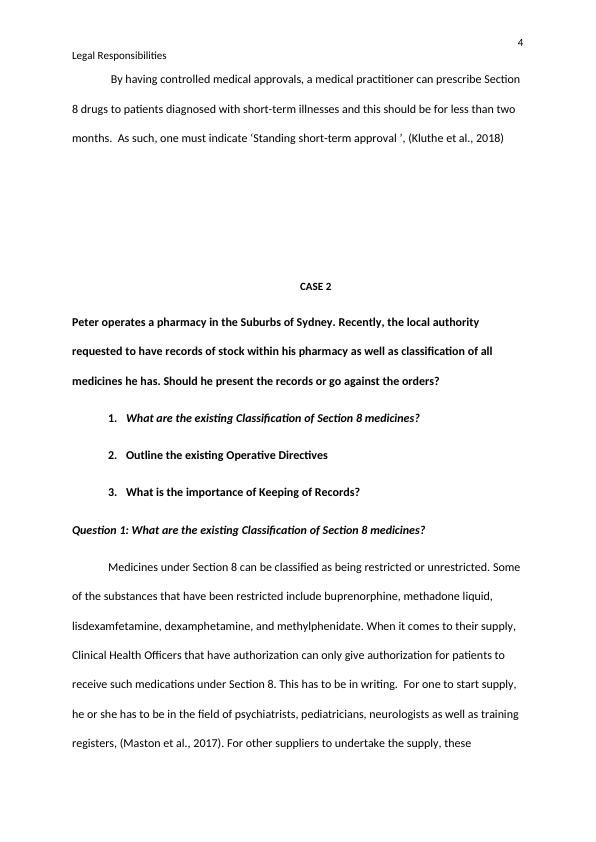Legal Responsibilities Assignment PDF
12 Pages2854 Words56 Views
Added on 2021-05-31
Legal Responsibilities Assignment PDF
Added on 2021-05-31
ShareRelated Documents
End of preview
Want to access all the pages? Upload your documents or become a member.
Legal and Regulatory Framework for Medication Administration in Australia
|17
|4921
|482
Student Assessment: Tasks 1 and 2 - IV Medication Administration and Electrolyte Imbalance
|21
|6018
|175
Legislation, Codes of Practice and Policies for Medication Handling in Health and Social Care
|3
|767
|117
Drug Administration: ENs, Legislations, Pharmacology, and Medication Errors
|15
|3248
|316
Proposed Rule for Dispensing and Prescribing Controlled Drugs for Detoxification Treatment
|4
|674
|87
Medication Quiz
|26
|4359
|83




